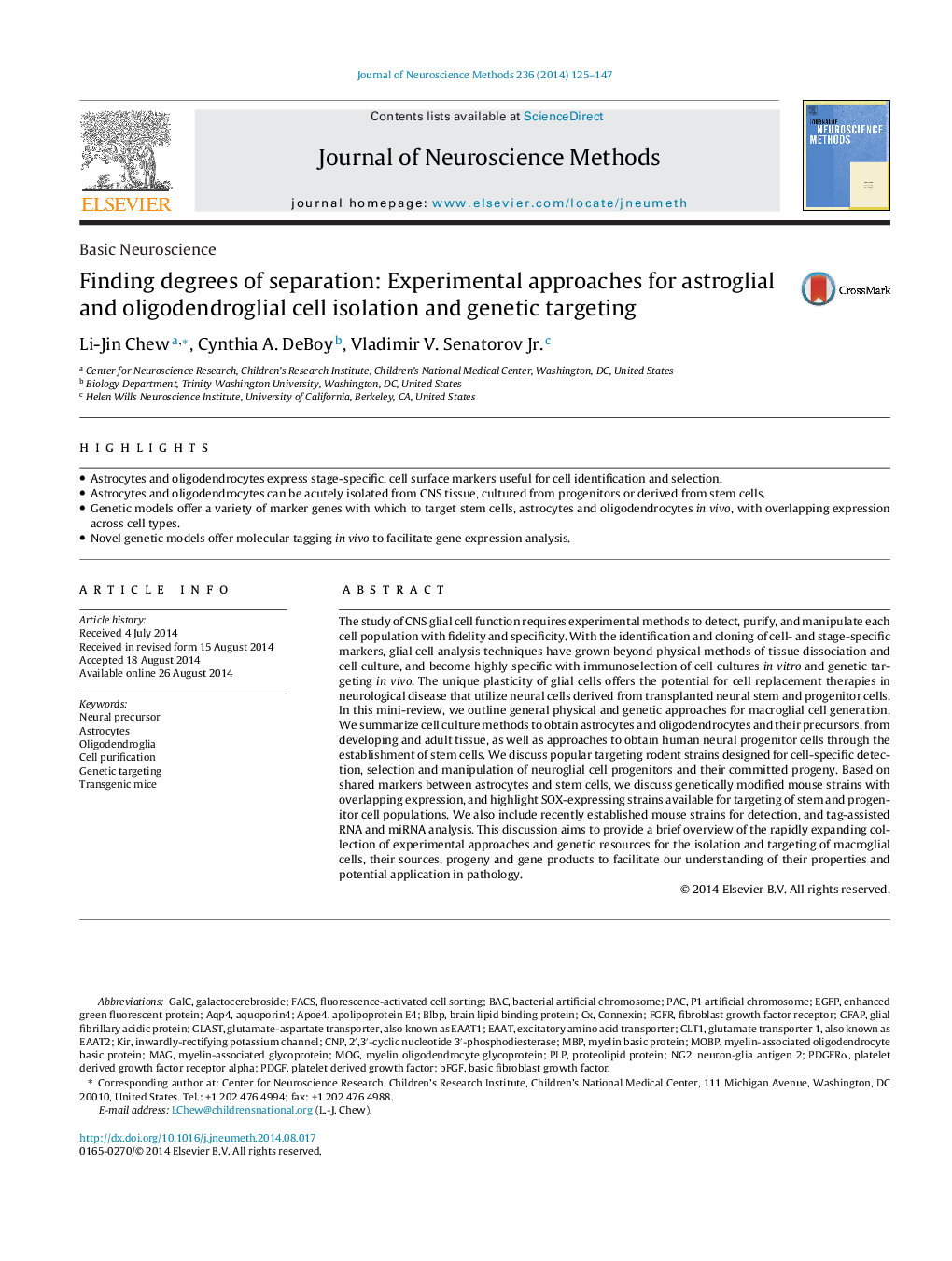| Article ID | Journal | Published Year | Pages | File Type |
|---|---|---|---|---|
| 6268590 | Journal of Neuroscience Methods | 2014 | 23 Pages |
â¢Astrocytes and oligodendrocytes express stage-specific, cell surface markers useful for cell identification and selection.â¢Astrocytes and oligodendrocytes can be acutely isolated from CNS tissue, cultured from progenitors or derived from stem cells.â¢Genetic models offer a variety of marker genes with which to target stem cells, astrocytes and oligodendrocytes in vivo, with overlapping expression across cell types.â¢Novel genetic models offer molecular tagging in vivo to facilitate gene expression analysis.
The study of CNS glial cell function requires experimental methods to detect, purify, and manipulate each cell population with fidelity and specificity. With the identification and cloning of cell- and stage-specific markers, glial cell analysis techniques have grown beyond physical methods of tissue dissociation and cell culture, and become highly specific with immunoselection of cell cultures in vitro and genetic targeting in vivo. The unique plasticity of glial cells offers the potential for cell replacement therapies in neurological disease that utilize neural cells derived from transplanted neural stem and progenitor cells. In this mini-review, we outline general physical and genetic approaches for macroglial cell generation. We summarize cell culture methods to obtain astrocytes and oligodendrocytes and their precursors, from developing and adult tissue, as well as approaches to obtain human neural progenitor cells through the establishment of stem cells. We discuss popular targeting rodent strains designed for cell-specific detection, selection and manipulation of neuroglial cell progenitors and their committed progeny. Based on shared markers between astrocytes and stem cells, we discuss genetically modified mouse strains with overlapping expression, and highlight SOX-expressing strains available for targeting of stem and progenitor cell populations. We also include recently established mouse strains for detection, and tag-assisted RNA and miRNA analysis. This discussion aims to provide a brief overview of the rapidly expanding collection of experimental approaches and genetic resources for the isolation and targeting of macroglial cells, their sources, progeny and gene products to facilitate our understanding of their properties and potential application in pathology.
